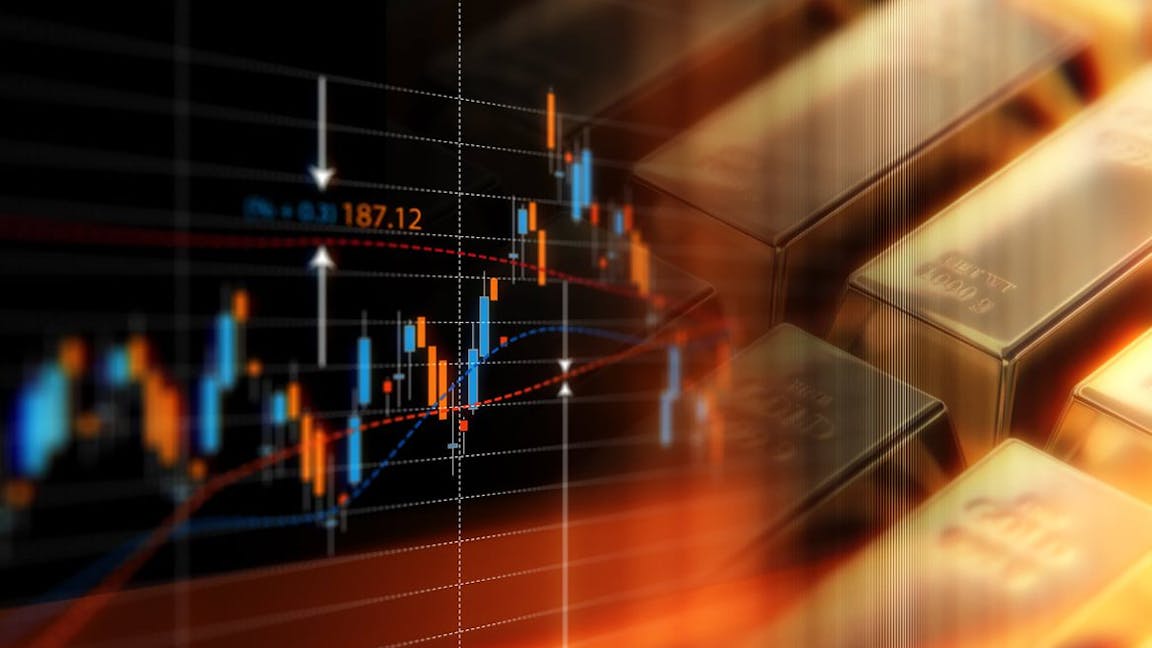
Gold is unique. It’s not really a commodity, not really a currency and not really a fixed income as it doesn’t generate any yield. Despite all of this, gold has historically been a much valued asset, especially during times of crisis.
Like every investable asset it has its own positives and negatives that make it less or more attractive at different times. However, what makes it so intriguing is how the gold price reacts in relation to other economic and financial variables. Below is a list of all the main drivers of the gold price:
- US treasury bonds – These are typically seen as one of the safest assets, paying back a fixed income. When that income dips, gold can become attractive as an alternative. Often a correlation is observed between the bond yields dipping and the gold price rising, that is why some people say ‘gold is a bond that pays no yield’.
- US inflation – When a currency inflates its value decreases. Investors may therefore look to put their money into something that they see as a better store of value. Many investors talk about the historic correlation between rising inflation and rising gold prices.
- Central banks’ monetary stimulus – Also known as quantitative easing or money printing, monetary stimulus can push up the gold price because investors fear the rise of inflation, low interest rates on cash savings and inflated prices in other assets such as equities – all of which can be a result of central bank stimulus.
- The gold reserves of central banks – If the world’s central banks such as The Fed or the Bank of England start buying gold to increase their reserves it could indicate they see gold as undervalued or anticipate an economic shock or devaluation of paper currency coming up. Other investors may take note and also buy gold, driving up the price.
- The US $ price weakness/appreciation – The value of the US dollar, the closest thing to a recognised global pricing currency, is linked to inflation and to central bank policy but it is also relative to the strength of other currencies. If the dollar price goes down, the price of gold will likely go up.
- Equity prices – Gold also tends to move conversely to the equity markets which reflect economic sentiment but are prone to volatility. Equities typically perform very badly and lose money at times of crisis (war, financial crash, pandemics). When that happens gold will usually go up as investors rush to its perceived safety.
- Emerging Markets outperforming – Emerging markets are often buoyed by the prices of the commodities, such as gold, which underpin their economies. If they are doing well, gold will often rally.
- Speculation by hedge funds and other commodity speculators – A big move by a hedge fund or a contrarian investor, sometimes betting against other markets, may prompt a gold rally as other investor expect the gold price to rise.
- Participation in buying gold as a safe haven – During times of economic stress many individuals may seek to buy gold, either as an allocated investment or physically, as they seek to safeguard their wealth. This rush can push the gold price up.
- Seasonal consumption – The gold price has also been noted to move at certain times of the year, as religious and social festivities see people buying and gifting gold, notably during Chinese New Year and Diwali.
The size of this list and the significant potential scale of each variable illustrates how complex the gold picture can become. There are multiple factors to understand it as an asset class and each of them has an impact. It is worth noticing though among all the drivers in the list, two of them stand out particularly to explain gold price variation: US treasury Bonds and Inflation. Further detail can be found in our blog. It’s also worth noting that, like many investable assets, you don’t have to own gold for it to be valuable to you – it’s price movements could be telling you something about other parts of the market. Such relationships between different markets and assets underpin the value of investing via a balanced portfolio.
Risk warning
As with all investing, your capital is at risk. The value of your portfolio with Nutmeg can go down as well as up and you may get back less than you invest. Past performance and forecasts are not reliable indicators of future performance.
